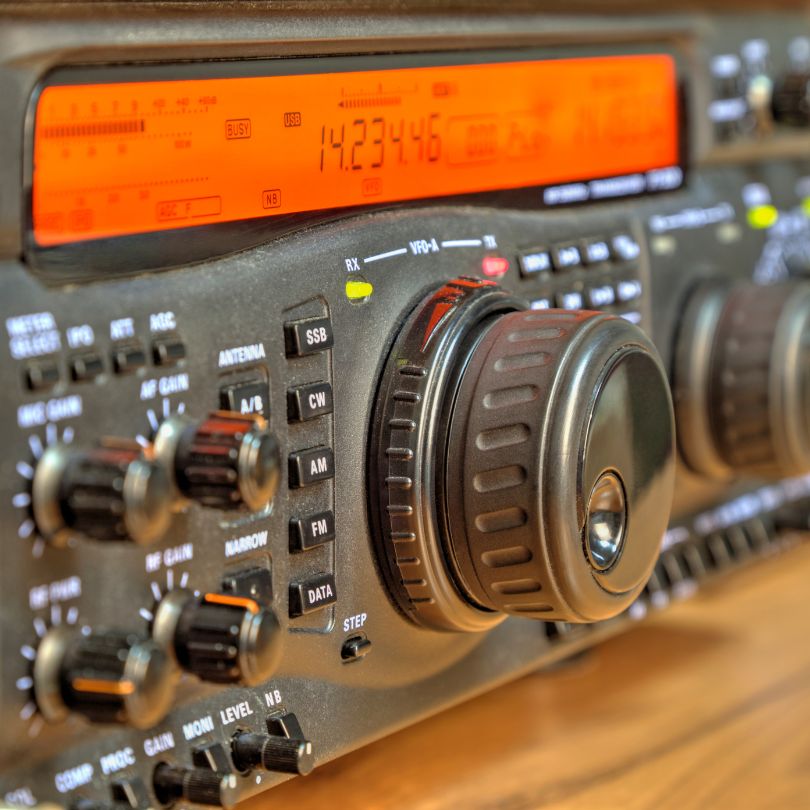
Radio Advertising Networks: The Key to Effective Broadcast Ads

Network radio advertising plays a crucial role in the advertising world. It uses a network of affiliated stations to broadcast audio content to large audiences. This form of advertising is not only affordable but also has unique benefits such as engaging radio audiences and targeted radio campaigns. Advertisers can take advantage of the wide reach of radio, which connects with about 92% of adults every week.
However, it’s essential to understand that network radio is just one part of the larger advertising picture. For example, native advertising has become a powerful tool, enabling advertisers to create successful campaigns by studying profitable native ads from their competitors.
Moreover, having a grasp of ad networks can further improve an advertiser’s strategy. The main point is that network radio advertising offers an excellent platform for reaching various demographics while keeping costs down and building strong connections with the audience.
Understanding Network Radio Advertising
Network radio advertising utilizes a radio advertising network comprising affiliated radio stations to deliver audio content to a broad audience. This strategy involves multiple stations working together to broadcast commercials and syndicated programs, ensuring an extensive reach across various demographics. By tapping into these networks, advertisers can disseminate their messages effectively without geographical constraints.
The content broadcasted through network radio advertising typically includes:
- Commercials: Short audio spots promoting products or services, strategically placed within popular programs or time slots.
- Syndicated Programs: Pre-recorded shows distributed across multiple stations, often featuring well-known hosts or themes that attract specific listener groups.
This dual approach allows advertisers not only to leverage the collective audience of affiliated stations but also to target specific segments through tailored content, maximizing impact and engagement.
Types of Network Radio Buys
Network Buys offer advertisers an efficient way to reach national markets. By purchasing ad space across a network of stations, advertisers can target broad demographics at a lower cost. This strategy leverages bulk buying power, making it a cost-effective solution for campaigns aiming for extensive market penetration. Advertisers benefit from the ability to craft a consistent message that resonates with diverse audiences across the country.
Syndication Buys, on the other hand, focus on specific shows and targeted audiences. This approach allows advertisers to tailor their messages to niche demographics by placing ads within syndicated programs that align with their brand values or products. For instance, an advertiser targeting sports enthusiasts might choose syndicated sports talk shows to ensure their message reaches the right audience. Syndication Buys enable precise targeting, making them ideal for brands looking to engage with particular listener segments while maintaining control over ad placements and messaging.
Both buying options provide unique advantages, allowing advertisers to choose strategies that best fit their goals and target demographics.
The Extensive Reach and Audience Engagement of Radio Advertising Networks
Network radio advertising has an impressive broadcast advertising reach, connecting with approximately 92% of the adult population weekly. This vast audience is made possible by the network of over 15,000 radio stations in the U.S., many affiliated with major networks like iHeart Media and Cumulus Media. By leveraging these affiliations, advertisers can deploy national radio ads that efficiently reach a wide listener base.
Statistics show that about 94% of radio listeners tune into network-affiliated stations each week, demonstrating the medium’s strength in maintaining listener attention. This regular engagement allows advertisers to effectively communicate their messages to a diverse audience.
Listener Demographics
Understanding listener demographics is crucial for crafting impactful network radio advertising campaigns. The typical profile includes educated, working adults with higher income levels — individuals often reached during prime listening times like commuting hours. These listeners are not just passive consumers; they interact with content and are more likely to make purchasing decisions based on what they hear.
The engagement levels with network radio advertising are significant due to radio’s unique ability to create personal connections through voice and sound, fostering trust and loyalty among its audience. As advertisers seek to maximize their impact, tapping into this engaged listener base becomes invaluable.
Cost Effectiveness and Flexibility in Radio Advertising Strategies
Ad Cost Effectiveness and ROI in Radio Advertising
Network radio advertising stands out for its cost efficiency, primarily due to the power of bulk buying. This strategy allows advertisers to purchase airtime across a network of stations at a reduced rate, making it a budget-friendly option for reaching national markets. The financial benefits are significant, with studies suggesting an impressive return on investment (ROI) for radio advertising, often estimated around 10:1. This means that for every dollar spent, advertisers can potentially see a tenfold return, highlighting the economic advantage of this medium.
Flexible Scheduling Options
Radio’s flexible scheduling options further enhance its appeal. Advertisers have the ability to tailor their campaigns to target specific time slots that align with their audience’s listening habits. This flexibility ensures that ads are broadcast when they are most likely to reach and engage the intended demographic, maximizing their impact. By selecting optimal times for ad placement, businesses can ensure their messages resonate effectively with listeners who are most likely to convert into customers.
Radio advertising offers both cost effectiveness and strategic flexibility, making it a compelling choice for advertisers aiming to optimize their marketing spend while achieving extensive reach and engagement.
Leveraging Endorsements: A Powerful Tool in Radio Advertising
Personality endorsements have become a key element in radio advertising, enhancing brand trustworthiness and improving campaign effectiveness. Recognized personalities lend credibility to your brand, turning your message into a trusted recommendation. Listeners often feel familiar and trust radio hosts, making their endorsements very influential.
Strategies to Effectively Integrate Endorsements into Radio Ad Messaging
Here are some strategies to effectively integrate endorsements into your radio ad messaging:
- Aligning the Right Personality: Choose endorsers whose values and audience align with your brand. This alignment ensures authenticity, making the endorsement more genuine and impactful.
- Crafting Relatable Scripts: Develop scripts that allow the personality to weave personal stories or experiences with your product naturally. This conversational approach resonates well with listeners.
- Utilizing Live Reads and Testimonials: Encourage live reads where the personality speaks about the product in real-time. Live testimonials are perceived as more authentic compared to pre-recorded spots.
- Incorporating Interactive Elements: Engage listeners by integrating calls-to-action within the endorsement, such as visiting a website or participating in a contest.
Through these strategies, endorsements not only enhance brand credibility but also create a stronger connection between the listener and the product, leading to increased engagement and conversion.
Future Trends in Network Radio Advertising
As the world of broadcast ads changes, future trends in radio advertising are influenced by new technologies and evolving listener habits. The use of artificial intelligence and data analysis is leading to more customized ad experiences. Advertisers can now use AI to understand what listeners like, allowing them to create highly focused campaigns that speak directly to specific groups.
1. Voice-Activated Devices
With the rise of smart speakers and voice-activated technology, radio networks are exploring new ways to engage listeners who interact with audio content via these devices. This shift creates opportunities for advertisers to craft unique audio ad experiences that connect with tech-savvy consumers.
2. Interactive Ads
As listeners increasingly seek interactive content, network radio advertising is incorporating elements like shoppable ads and real-time engagement features. These innovations enhance listener engagement and provide measurable results for advertisers.
3. Podcast Integration
The growing popularity of podcasts offers additional avenues for advertisers to reach audiences through network radio platforms. By incorporating podcast-style content, advertisers can tap into niche markets and expand their reach beyond traditional radio listeners.
Such developments indicate an exciting future for network radio advertising, with the promise of stronger audience connections and creative marketing approaches.
Conclusion
Network radio advertising is a great option for marketers who want to reach a large audience and make a lasting impression. With the power of network radio ads, advertisers can connect with millions of listeners on a platform that has stood the test of time. The benefits—affordability, precise targeting, and loyal listener connections—make it an essential part of any marketing plan.
As you explore different advertising choices, think about including network radio advertising in your strategy. By doing so, you’ll be able to tap into its distinct advantages and achieve successful results in your campaigns.